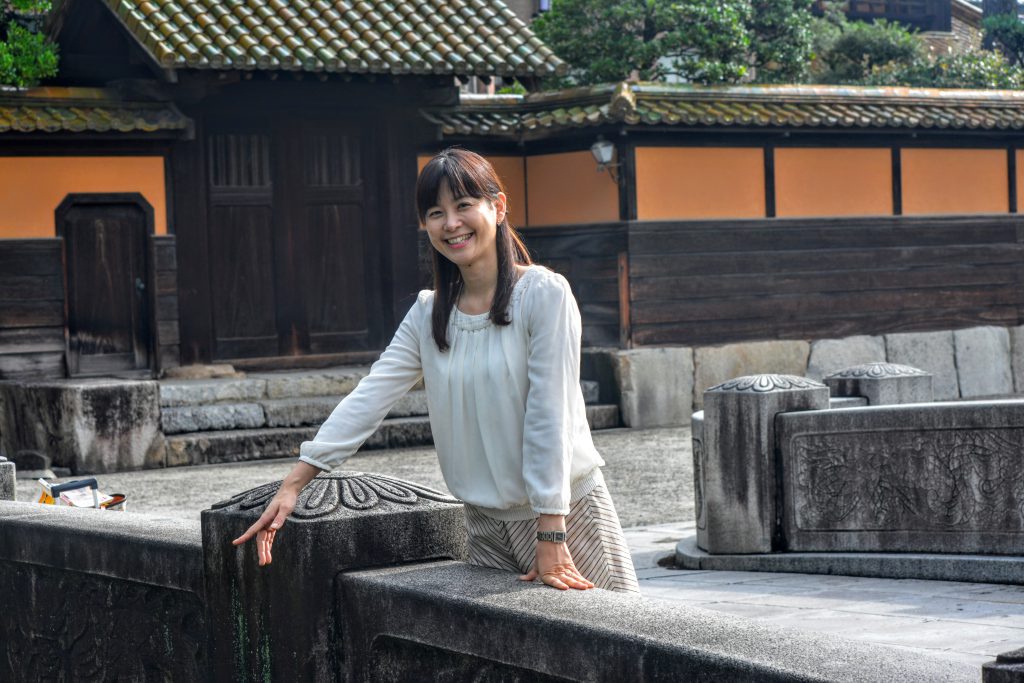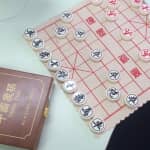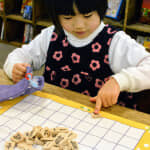Shogi 20 January 2017
Visiting Birthplace of a Shogi Legend, Kurashiki
The other day, I went to Kurashiki, Okayama Pref. with our staff members. Kurashiki is famous for its beautiful streetscape of merchant houses with white walls. It’s generally known as a city of art, and has a strong connection with Shogi.
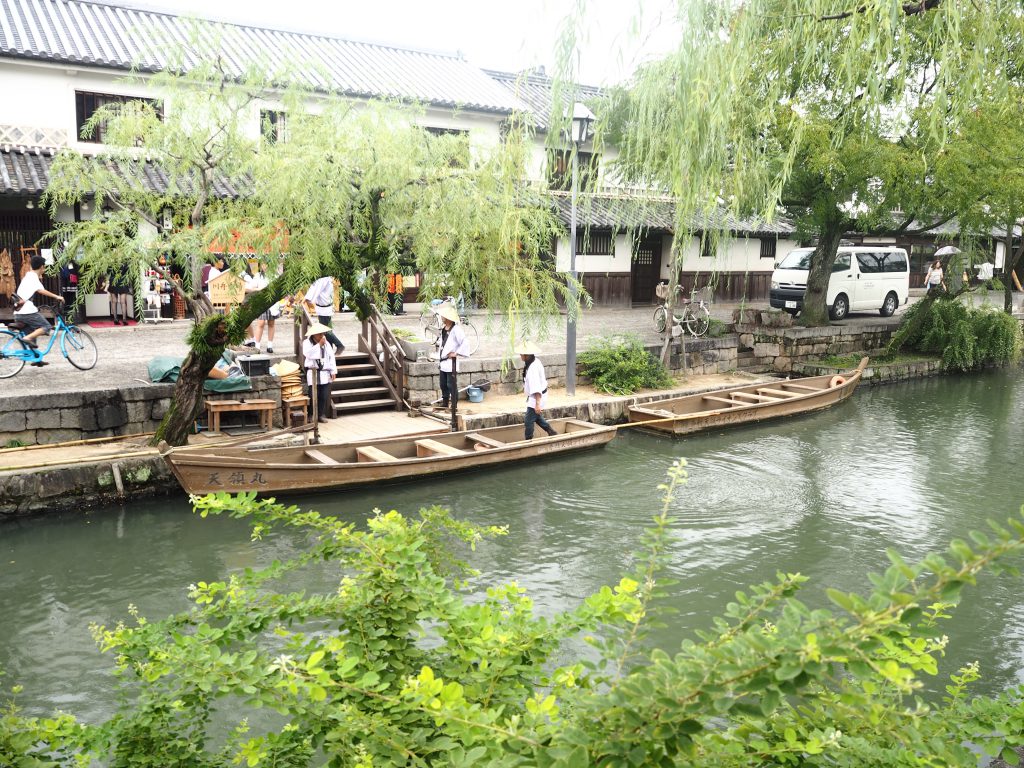
The birthplace of Super Shogi Legend who went down in history.
Kurashiki-shi is the birthplace of Yasuharu Oyama who was the 15th Shogi Eisei Meijin, or Grand master.
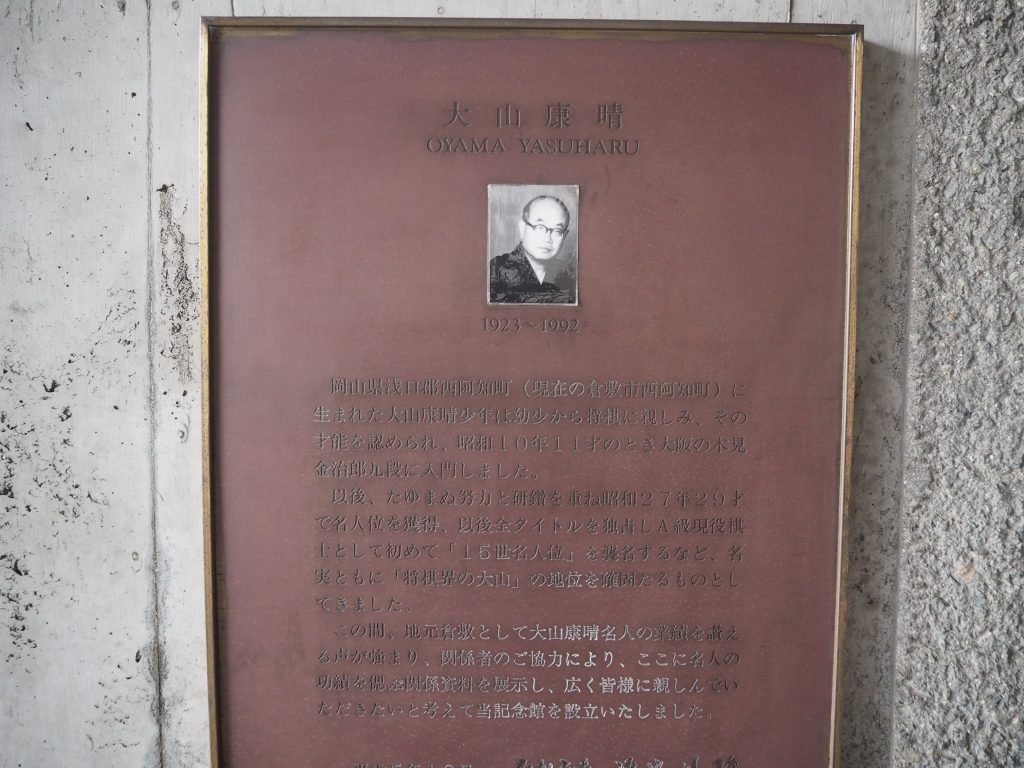
Yasuharu Oyama who was the 15th Shogi Eisei Meijin was surely a legend who went down in history with his brilliant career, such as attending major title matches continuously (50 times), winning general major tournaments (44 times). And he acquired 5 different Eisei titles: the 15th Shogi Eisei Meijin, Ju-dan (the former title of Ryuou), Oui (major title), Kisei (major title), and Oushou (major title). He pursued fair and square Shogi style without any cheep trick.
He started to play Shogi around five years old, and moved to Osaka after graduating from an elementary school to become a disciple of Kinjirou Kimi who earned title of nine Dan at that time. As I introduced before, Oyama got influenced by his teacher and preferred to play Chu Shogi, which is a kind of Shogi using a board with 1212 square and not popular in all age.
Since Oyama had made his professional debut in Shogi world at the age of 17, he rapidly moved up through the ranks with gaining many titles, such as Meijin and Ohshou, and set a record that had never been accomplished. He was also famous for his sincere efforts to spread Shogi other than cultivating his own skills.
In 1970, Permanent Miejin Oyama was given a title of honorary citizen from Kurashiki-shi, and Oyama Meijin memorial hall was built in Kurashiki-shi. After he passed away, in 1993 the tournament with his name, Oyama Meijin Cup Kurashiki Touka-Sen, was established and annually Ladies professional players grace to this tournament and Kurashiki-shi. Moreover, at Oyama Meijin memorial hall, Shogi classes where you can get advice from professional players in person are held every week. He has kept making great contribution to Shogi world even after he died.
I actually visited the Oyama Meijin Memorial hall 13 years ago. With Director Kitamura, I saw several Oyama Meijin’s things including his trademark glasses, cups for the championships and hanging scroll with his autograph writing. I have really good memory.
Unfortunately, this time the hall was closed. It was pity though, I found a bill with a quiz of checkmate problem near the entrance door. Shogi lovers could enjoy even outside the hall; surely it is worth to go!
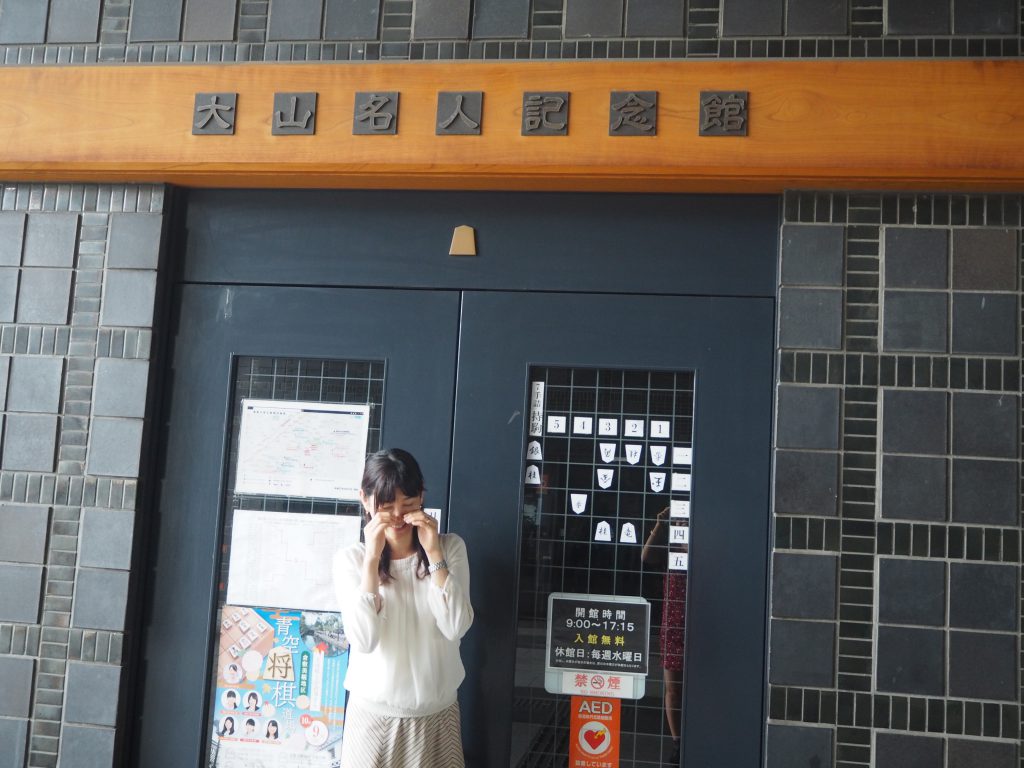
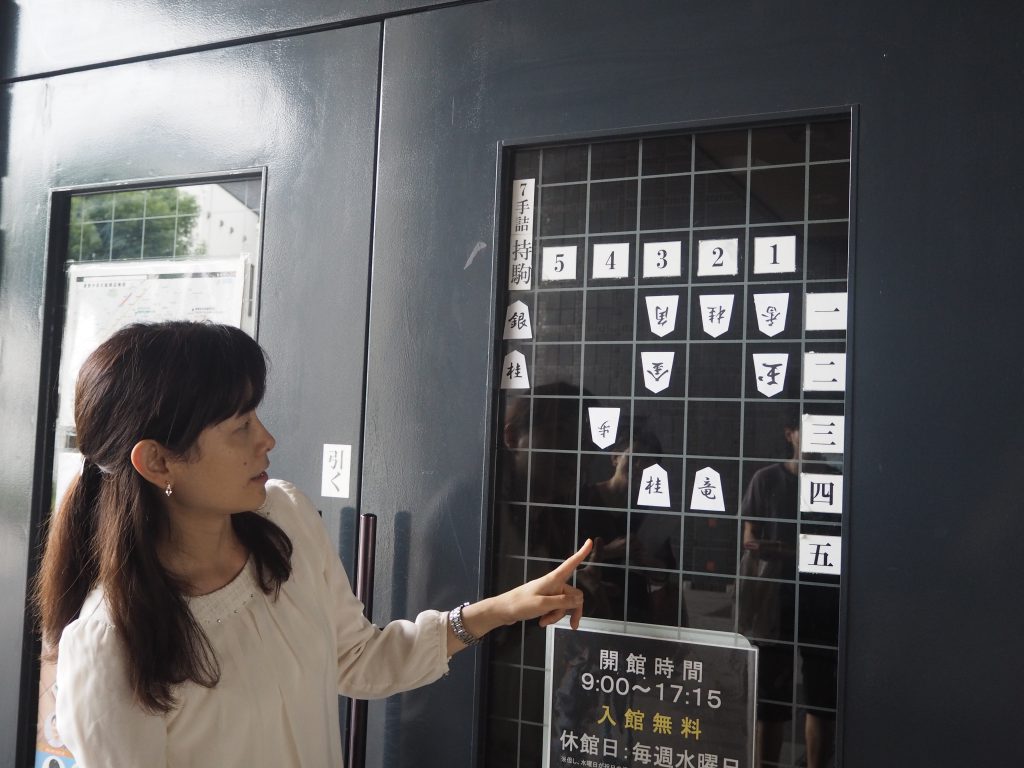
Postscript–after the Visiting–
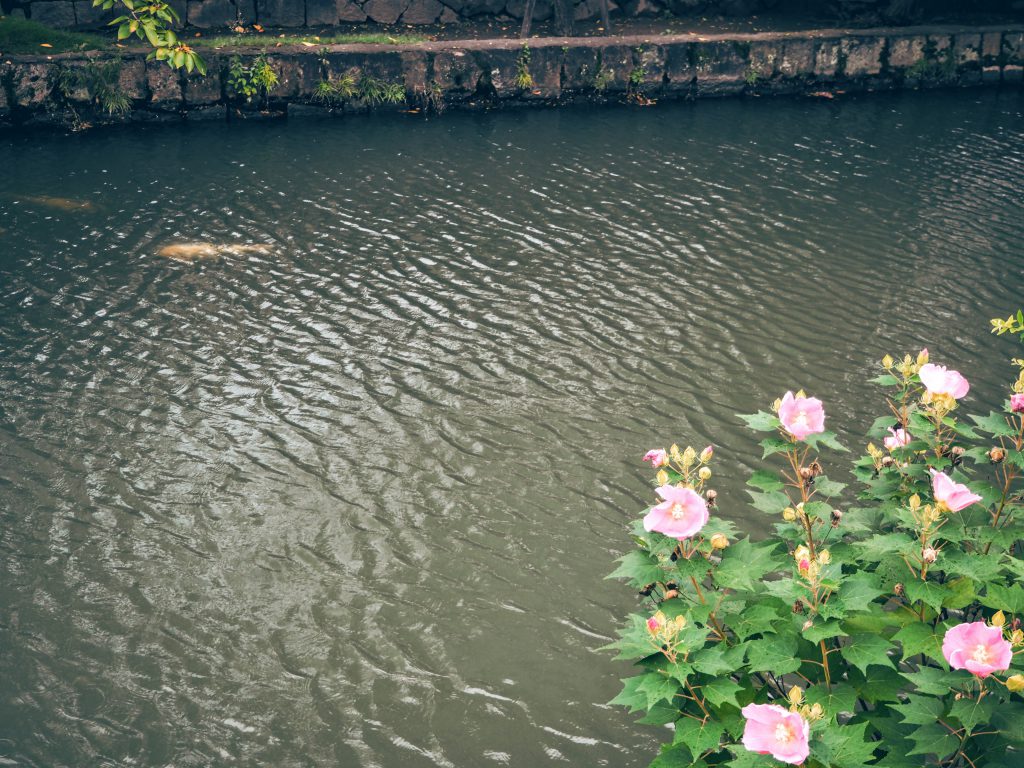
Kurashiki is familiar to ladies professional players, since an official tournament for ladies professional players named Oyama Meijin Cup Kurashiki Touka-Sen (the other day, Miss Yuki Muroya challenged the title!) is held there regularly. The first time I heard the name of this match, I was impressed with this beautiful name.
In Kurashiki, the other tournament for children is also held, which is one of the two official tournaments for school children and a kind of Meijin title match for them. 128 representatives of primary school children from all over Japan compete for the title of Kurashiki Oushou Title Match (Note: tentative translation).
Children are very excited to participate in this tournament hoping to attend a following national tournament and to go to Kurashiki.
As the last visiting, I enjoyed Kurashiki local cuisine, “Mamakari”, which is very delicious fish.
Kurashiki Bikan Historical Quarter is the picturesque area where merchants’ houses with white walls are nestled along small canals. A very compact area provides us gentle and quiet time. Incidentally, as a souvenir for my family, I got “Kibidango”, which is one of Japanese sweets and very popular. As an aside, Kibidango is an important supporting item in a Japanese traditional folk tale titled “Momotaro.” In this story, Kibidango is Momotaro’s favorite and he went to Demon’s island to beat demons, bringing Kibidango with him.
I hoped my children would become as strong as Momotaro.

